Iceland solo travel hits hard from the first view. Glaciers and volcanoes carve out a landscape that steals every adjective you thought you had. Days can stretch to 24 hours in summer, while winter skies explode with Northern Lights.
No wonder the island has become one of the planet’s hottest destinations. Many dream of coming once they glimpse those black sand beaches and steaming lava fields. Packing the right gear and mapping routes are obvious.
Finding company isn’t. Good news: you don’t need any. Iceland will reward you with safe roads, clear signs, and endless miles of raw space.
Why Iceland is Perfect for Solo Travel
Where do we even start? We can think of a million reasons why solo travel in Iceland. But here are a few that stand out for us:
Safety and Low Crime
Is Iceland safe to travel alone? Safer than most places you know. While much of Europe feels like a low-key police state with cameras on every corner, Iceland keeps it simple. The country ranks first on the Global Peace Index for the 17th straight year with near-zero violent crime and barely any corruption.
Petty theft exists in busy tourist spots but remains rare and closely watched. Police presence is calm and human. Officers are friendly, usually unarmed, and easy to spot without being in your face. Locals see them as neighbors first, authority second.

When people do run into trouble, it’s usually small stuff like minor car bumps on gravel roads or a sprained ankle on a hiking trail. Community networks and volunteer rescue teams handle those fast.
Ease of Communication
Travel in Iceland alone is almost too easy. About 98 percent of locals switch to fluent English without a pause. You can ask for a coffee refill or directions to the next hot spring and get an instant answer that makes sense.
Visitor centers are almost in every town and at major sights. They will hand out maps, give real tips, and provide quick fixes if plans fall apart. The only real tongue twister left is Eyjafjallajökull, and good luck pronouncing that without a small personal meltdown.
Hidden Gems and Wild Freedom
Iceland solo travel rewards anyone ready to leave the ring-road circus. Bergárfoss in the north and Svartifoss inside Vatnajökull National Park stay quiet enough to hear your own footsteps.
Getting there means hiking or taking a 4x4 along rough gravel, which keeps tour buses out. Trails like Graenihryggur ridge or the Kerlingarfjöll area push your legs and hands back, with volcanic views worth every climb.
Photographers catch raw light with no elbows in the frame. Then there’s the Highlands drive, where black lava, white glaciers, and endless sky stretch so far as the eye can see.
Tech and Connectivity
Going solo to Iceland doesn’t mean disappearing off the grid. Most of the Ring Road and key travel routes stay under strong 4G and even 5G coverage, so calls and maps work when you need them.
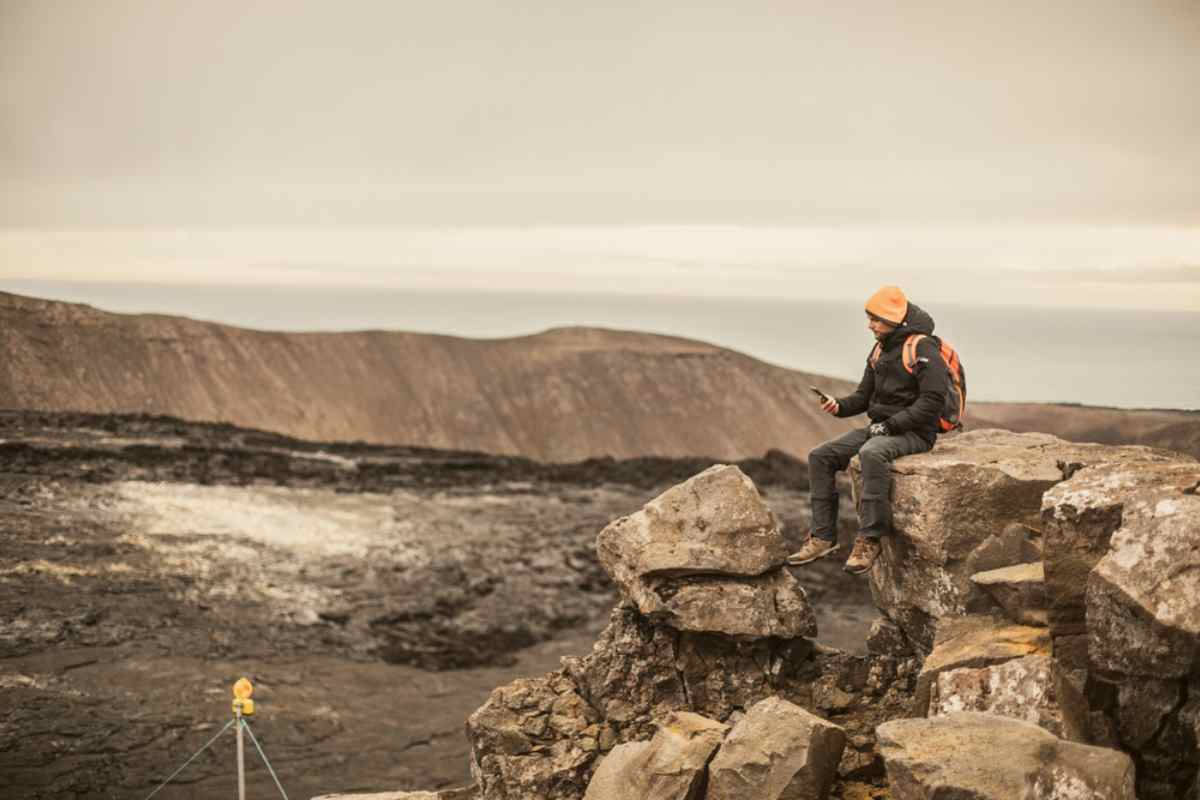
Remote Highlands or deep valleys can drop the signal, but that’s the whole point of going there, isn’t it? Wi-Fi waits at cafés, guesthouses, and campsites, usually free if you buy a coffee or book a bed. Speeds can dip in the far corners yet stay good enough for weather checks and photo uploads.
Best Ways to Travel Iceland Solo
Picking how to move around shapes the whole trip. Do you want your bed and wheels in one package or just a small car and a map? Maybe you’d rather ride buses or thumb a lift like the old days. Here are your options:
Campervans
Camping in Iceland solo is built for a campervan. Your bed and wheels travel together, so you can chase clear skies or a Northern Lights alert without hotel deadlines.
When you rent a campervan in Iceland through us, we include basic collision damage waiver and theft protection at no extra cost, with smart add-ons for gravel or sand damage if you plan to explore rougher tracks.
Overnighting is only allowed in designated campsites where quiet hours and clean sites keep the peace. Cooking inside trims food costs and skips the restaurant queue, letting you roam Iceland’s vast landscapes on your own schedule and budget.
Rental Cars
A rental car keeps Iceland solo travel neat and fast if you prefer a warm bed that isn’t bolted to a van. Go 4×4 for Highland F-roads or winter snow, stick to 2WD when you only plan to circle the Ring Road.
Watch fuel stops and slow down on gravel or single-lane bridges if you want to keep the tires and paint. Downsides? Every night means paying for a room, and every meal means paying someone else to cook.

And when the northern lights pop off at midnight, you can’t just slide open a van door and stay put.
Bus Passes and Public Routes
Straeto keeps buses moving across Iceland and builds extra routes in summer that reach quiet coastal villages and scenic valleys.
A single ride in Reykjavík costs about 670 ISK (around 3.80 USD), while 24-hour or 30-day passes give unlimited trips within the network. During peak months, city buses show up every 15 to 30 minutes and actually keep to schedule.
Off-season things tighten fast. Many lines drop to a few runs a week or stop completely, especially in the Highlands or remote fjords. Some rural routes need advance booking, so smart planning saves you from long waits in cold wind.
Hitchhiking Culture
Hitchhiking is part of Iceland’s travel DNA, a leftover from small-town generosity that still works today. Locals may seem quiet, but they usually stop if you look prepared.
Go in daylight, hold a clear cardboard sign, and layer up because the weather changes faster than a mood swing. Patience is the real ticket. Busy stretches of the Ring Road and the southern coast deliver quick lifts, but long hauls like Höfn to Egilsstaðir can mean a slow wait. The remote Highlands and Westfjords barely see traffic.
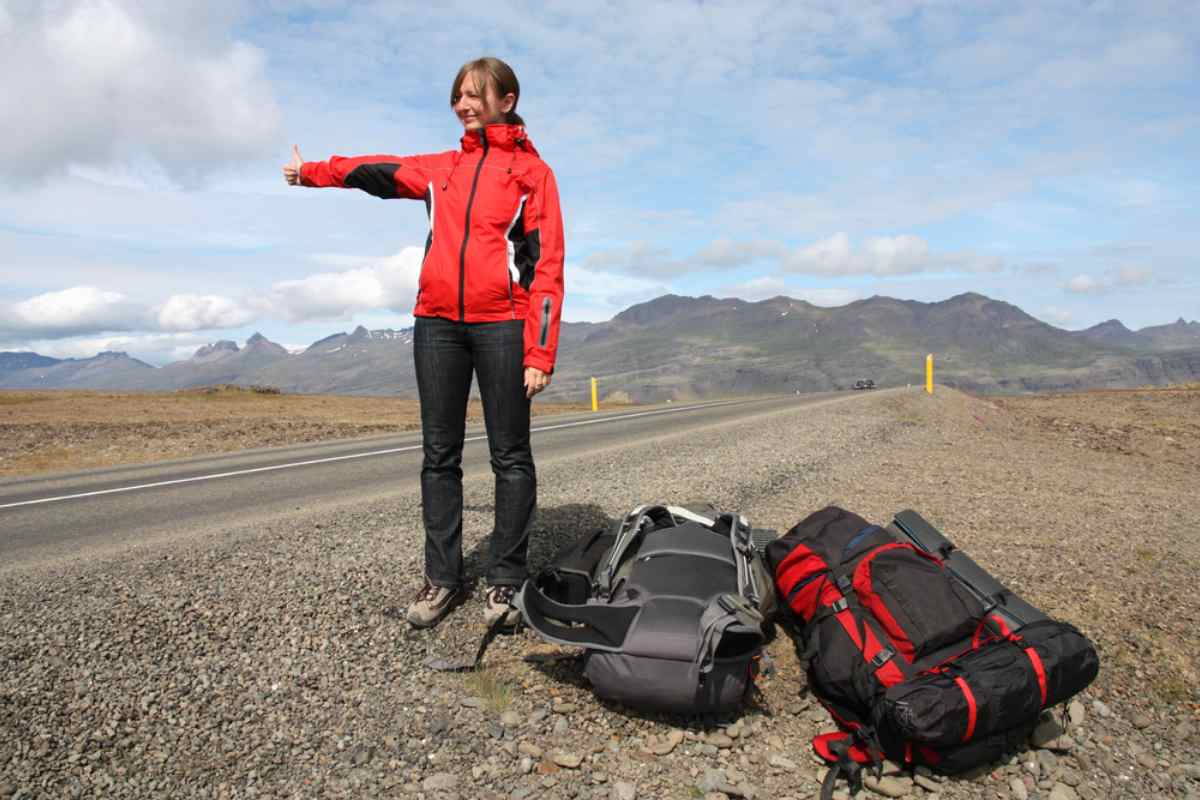
Suggested Itineraries for Solo Travelers (3-day, 7-day)
Time to turn the wish list into a route. These plans show what you can realistically cover in three days or a full week, with stops that matter and drives that fit daylight. From quick south coast highlights to a full Ring Road loop, it’s the shortcut to seeing a lot without rushing.
3-Day South Coast Sprint
Day 1 - Golden Circle
Start your Iceland solo itinerary in Reykjavík and drive to Thingvellir National Park, where two tectonic plates meet and Iceland’s first parliament is gathered. Continue to the Geysir area to watch Strokkur erupt every few minutes and smell the sulfur in the air. End at Gullfoss waterfall, where a double cascade crashes into a deep canyon, sending mist high enough to feel on your face.
Day 2 - South Coast Waterfalls & Black Beaches
Head toward Seljalandsfoss and walk behind its falling curtain. Move on to Skógafoss with its 60 m (197 ft) drop and frequent rainbows. Stop at Dyrhólaey for puffin cliffs and sweeping Atlantic views before finishing at Vik’s black-sand beach and the dramatic Reynisdrangar sea stacks.
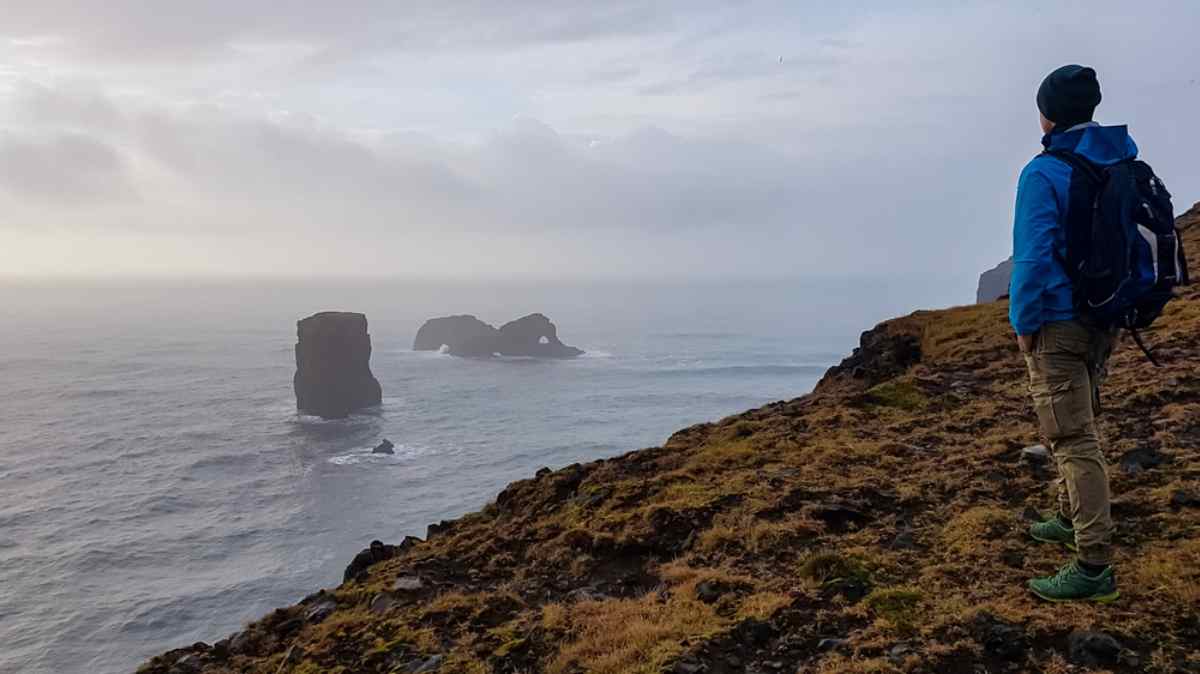
Day 3 - Finale: Ice or Steam
Drive east to Jökulsárlón glacier lagoon to watch icebergs and seals drift across the water, or turn back toward Reykjavík and unwind in the warm, mineral-rich Blue Lagoon. Either ending delivers a classic Iceland send-off.
7-Day Ring Road Solo Trip
Day 1 - Reykjavík to the South Coast
Leave the city and steer toward the Golden Circle. Walk the rift at Thingvellir, where two continents split and Viking history lingers. Watch Strokkur erupt at Geysir with a hiss of sulfur. End at the roaring double fall of Gullfoss before overnighting near Hella or Selfoss
Day 2 - Waterfalls and Black Beaches
Follow the coast to Seljalandsfoss, where you can circle behind a shimmering curtain of water. Next is Skógafoss, a 60 m (197 ft) waterfall that throws rainbows on sunny days. Dyrhólaey’s arch delivers sweeping ocean views and summer puffins. Settle in Vik after strolling its black-sand beach and the Reynisdrangar sea stacks
Day 3 - Glaciers and Ice Lagoons
Drive east into Vatnajökull National Park. Hike to Svartifoss framed by dark basalt columns and watch icebergs drift at Jökulsárlón while seals weave between them. Sleep near Höfn (about 270 km / 168 mi).
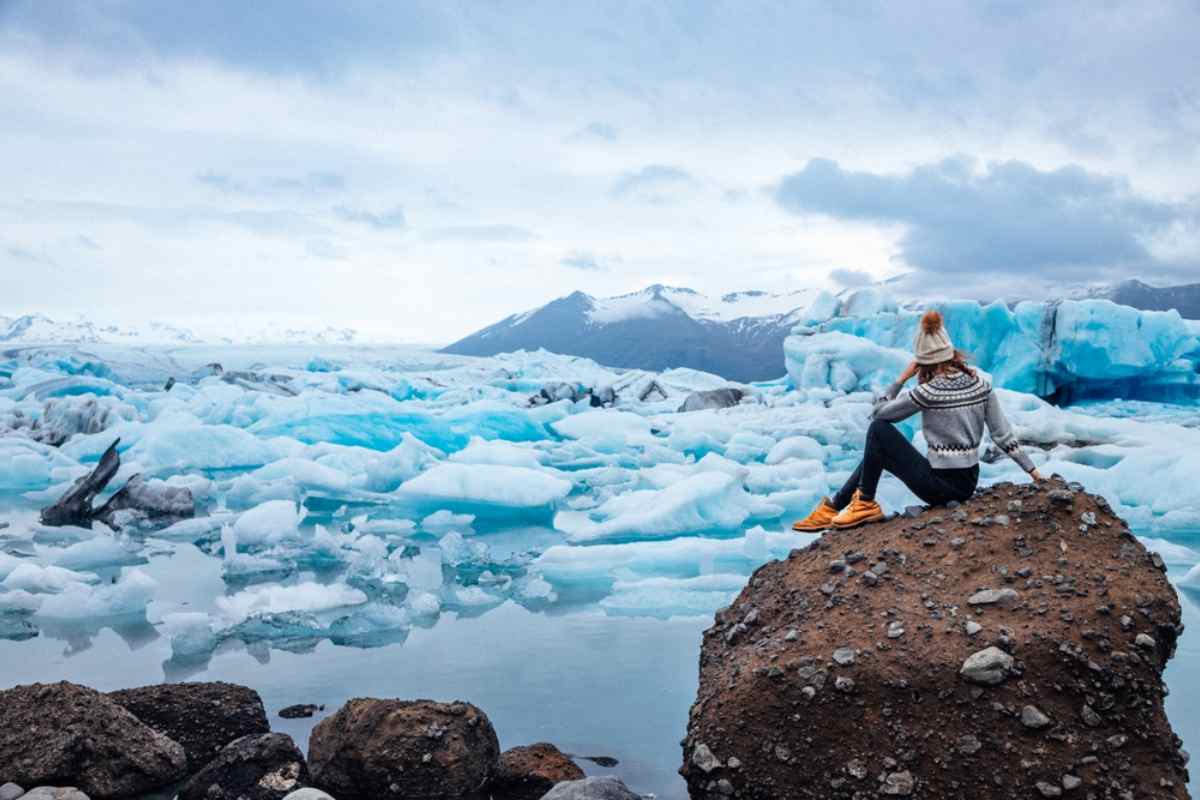
Day 4 - Eastfjords Detour
Navigate winding fjords and quiet fishing towns like Djúpivogur and artsy Seyðisfjörður. Sheer cliffs and mirrorlike bays make every turn worth a stop. Overnight in Egilsstaðir (about 250 km / 155 mi).
Day 5 - North Iceland Wonders
Head toward Dettifoss, Europe’s most powerful waterfall. Steam through the alien mud pots at Hverir and watch volcanic formations around Lake Mývatn. Finish the day in lively Akureyri.
Day 6 - Seals and Sea Stacks
Explore Akureyri’s cafés and harbor before driving the Vatnsnes Peninsula. Look for seals lounging near the Hvitserkur rock that rises like a stone dragon from the sea. End the night in Borgarnes.
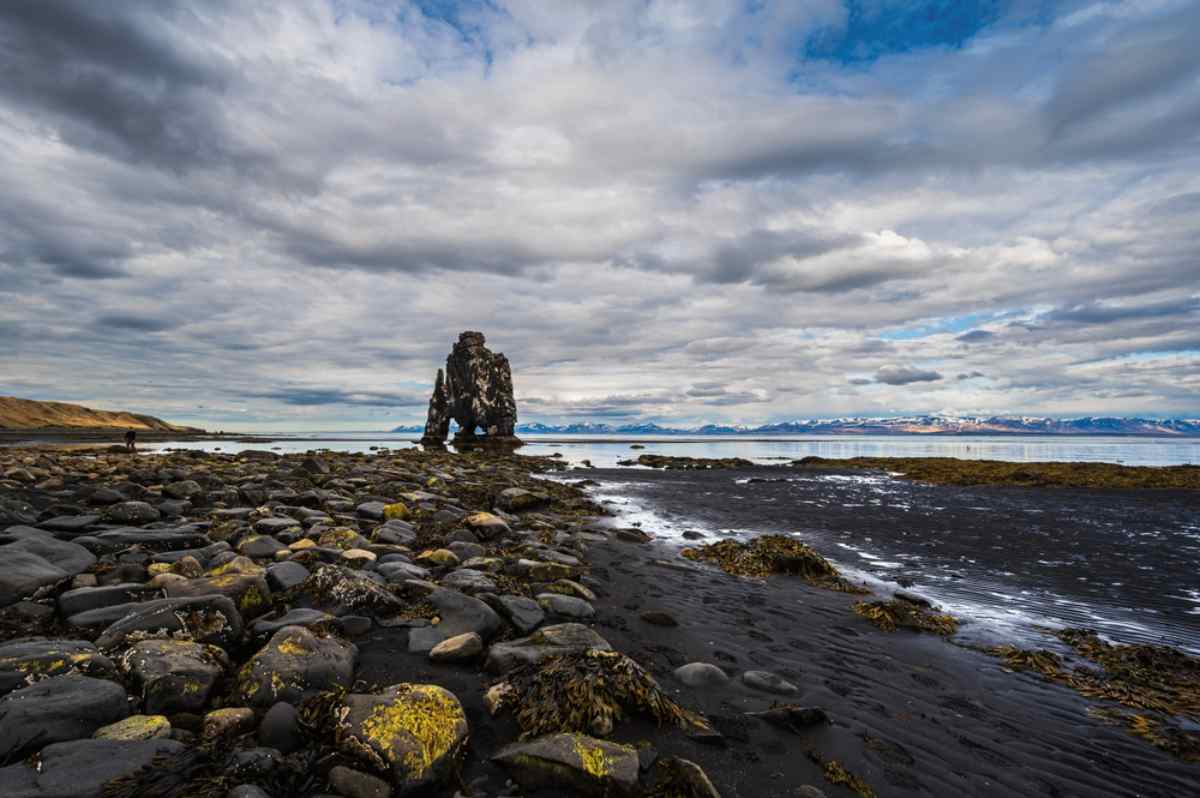
Day 7 - Snæfellsnes Finale
Circle the Snæfellsnes Peninsula, where lava fields meet fishing villages. Walk beneath Snæfellsjökull glacier volcano and linger at beaches like Djúpalónssandur before the final push back to Reykjavík.
Costs of Solo Travel in Iceland
Iceland’s beauty isn’t cheap, and the stories about high prices are mostly true. Yet a sharp plan mixing budget stays, smart transport choices, and a grocery habit lets you see the island without bleeding cash. Think of it as paying for freedom, not just beds and fuel.
Accommodation
Iceland's safety and comfort run side by side when it comes to sleeping arrangements. Hostel dorm beds start near 19 USD a night, and private rooms average about 137 USD, most with shared kitchens and lively common spaces. Guesthouses give more privacy, usually 80-250 USD a night, and often include breakfast, private bathrooms, and free Wi-Fi.
Campsites cost about 10-20 USD per person per night and stay spotless with toilets, showers, and sometimes kitchens. They are spread across the country and suit both tents and campervans.
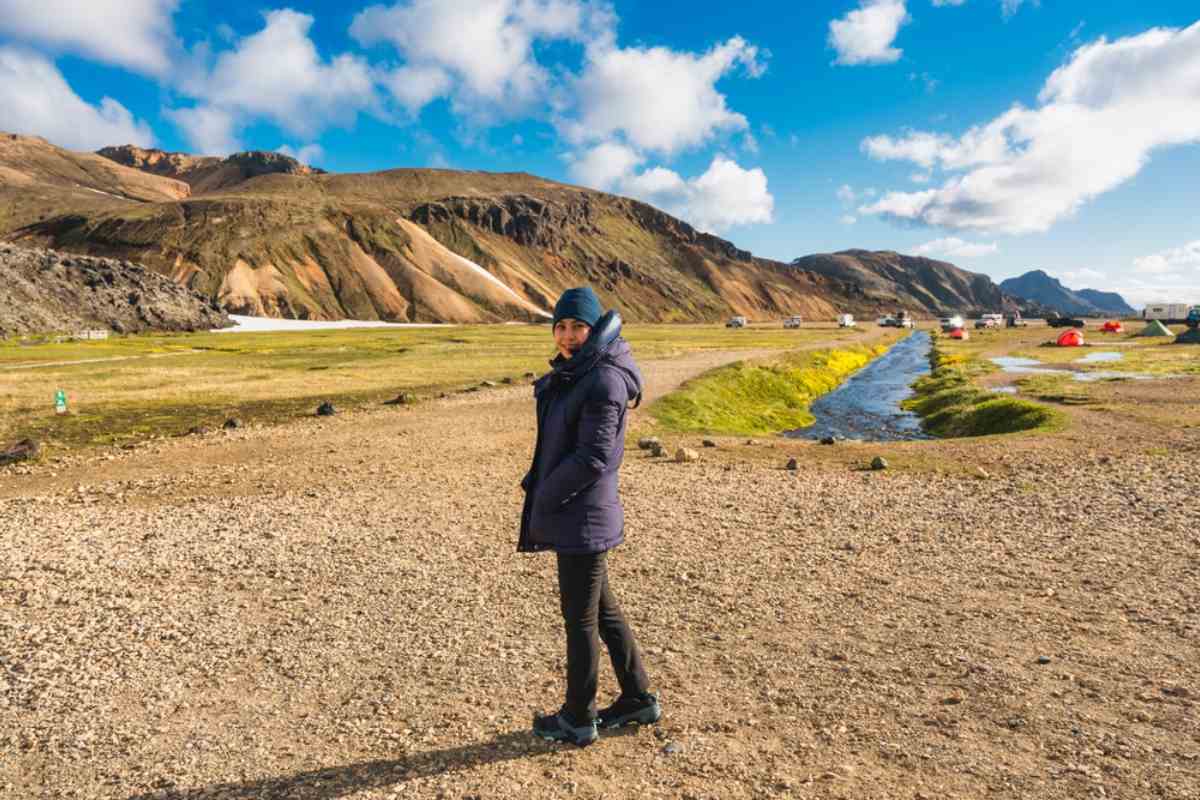
Transport and Fuel
Running the numbers matters as much as the scenery.
- Campervan setup - daily rental averages 150-250 USD, with campsite fees of 10-20 USD per person. Gas prices in Iceland sit around 2.45 USD per liter (roughly 9.3 USD per gallon). A typical 1,300 km / 808 mi Ring Road loop adds 225-300 USD in fuel.
- Car plus hostels - rental about 90 USD per day, extra insurance around 35 USD, and a guesthouse or hotel around 180 USD nightly, for a daily total near 330 USD for two people.
- Hidden extras - gravel or sand protection can add 30-45 USD per day, and occasional bridge or ferry tolls appear in areas like the Westfjords.
Food and Groceries
Eating well in Iceland and on a budget takes planning, not sacrifice. Stock up at Bónus or Krónan, where a basket of basics like bread, dairy, vegetables, and snacks runs about 50-70 USD.
Cooking in a hostel, guesthouse, or campervan keeps daily food costs near 15–25 USD per person and lets you decide when and what to eat. Restaurants charge roughly 20-40 USD per dish, so eating out often pushes up Iceland's travel costs fast.
The smart move is simple: fill your bags with groceries and cook most of the time to stay fresh, fueled, and financially sane for the next adventure.

Hidden and Seasonal Costs
- High-season pricing - Accommodation rates can double between June and August, so expect higher nightly costs during peak travel months.
- Accommodation tax - Most hotels and guesthouses add a mandatory 800 ISK (6 USD) per room per night.
- Activity fees - Guided glacier hikes, whale watching, and similar tours usually cost 70-150 USD each and need to be budgeted separately.
- Travel insurance - Strongly recommended due to Iceland’s rugged conditions; comprehensive plans covering medical emergencies and trip cancellations cost about 50-100 USD per week.
- Healthcare costs - Without insurance, even minor medical treatments can exceed 200 USD, making coverage important for budget protection.
Top Things to Do Alone in Iceland
Some places reward company. Iceland rewards space. Here’s why it’s probably the ultimate solo travel destination:
Hike Iconic Trails
Solo hikes in Iceland give you space to breathe and time to listen. Glymur leads to the country’s second-tallest waterfall through a mossy canyon with river crossings and cliff views. Reykjadalur rewards with a natural hot river after an easy climb through steaming valleys.
For a bigger test, Fimmvörðuháls runs between two glaciers with lava fields and crater views that feel endless. Pack layers, check conditions, tell someone your plan, and carry a small first aid kit so you can handle a sudden weather shift or a twisted ankle without panic.
Soak in Hot Springs
Iceland’s geothermal pools are built for quiet reflection. The Blue Lagoon near Reykjavík offers milky silica water and spa comfort. The Secret Lagoon in Fludir keeps things simple with steaming water and a rustic edge.
Hidden gems like Reykjadalur’s warm river or Landbrotalaug’s tiny rock pool reward hikers willing to wander off the main road. Arrive early or late to skip crowds and keep noise down for others.
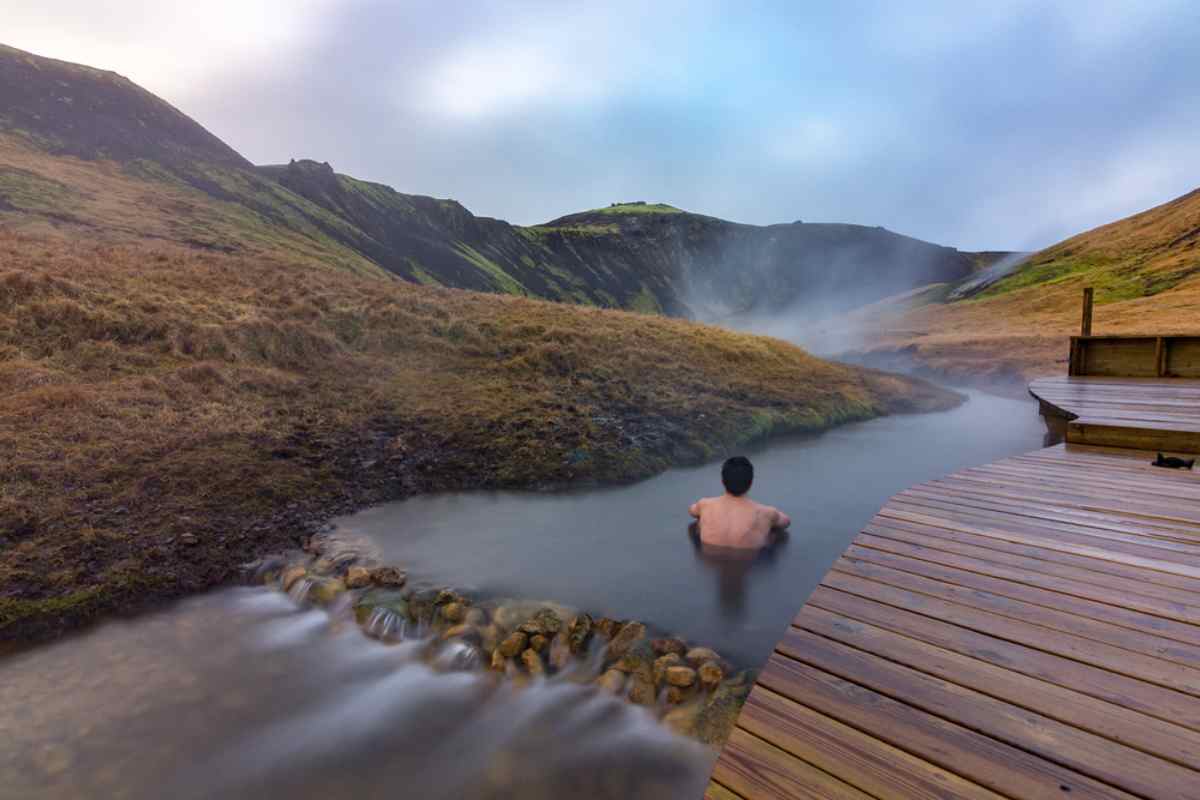
Wildlife Encounters
Solo travel makes wildlife moments feel personal. Husavík and Akureyri are top spots for whale watching, where humpbacks and sometimes blue whales breach close enough to spray your lens.
Puffins nest in cliffs at Dyrhólaey and Borgarfjörður Eystri from late May to mid-August. Bring a telephoto lens and shoot early or late when light is soft and animals are most active. Stay on marked paths to protect nests and keep a respectful distance so wildlife behaves naturally.
Culture and Creativity
Reykjavík rewards slow wandering. Murals splash color across downtown walls, small galleries host experimental art, and live music pulses in bars like Harpa and Kex Hostel. Local cafés and bookstores double as community hubs where you can linger over strong coffee and people-watch. When you crave company, join a food walk, a small art tour, or a late-night music crawl to meet locals and other travelers.
Tips for a Smooth Solo Trip
Good planning keeps the trip about adventure instead of damage control. Iceland’s weather, daylight swings, and empty stretches demand a bit of forethought. These tips help you stay safe, connected, and free to wander without stress.
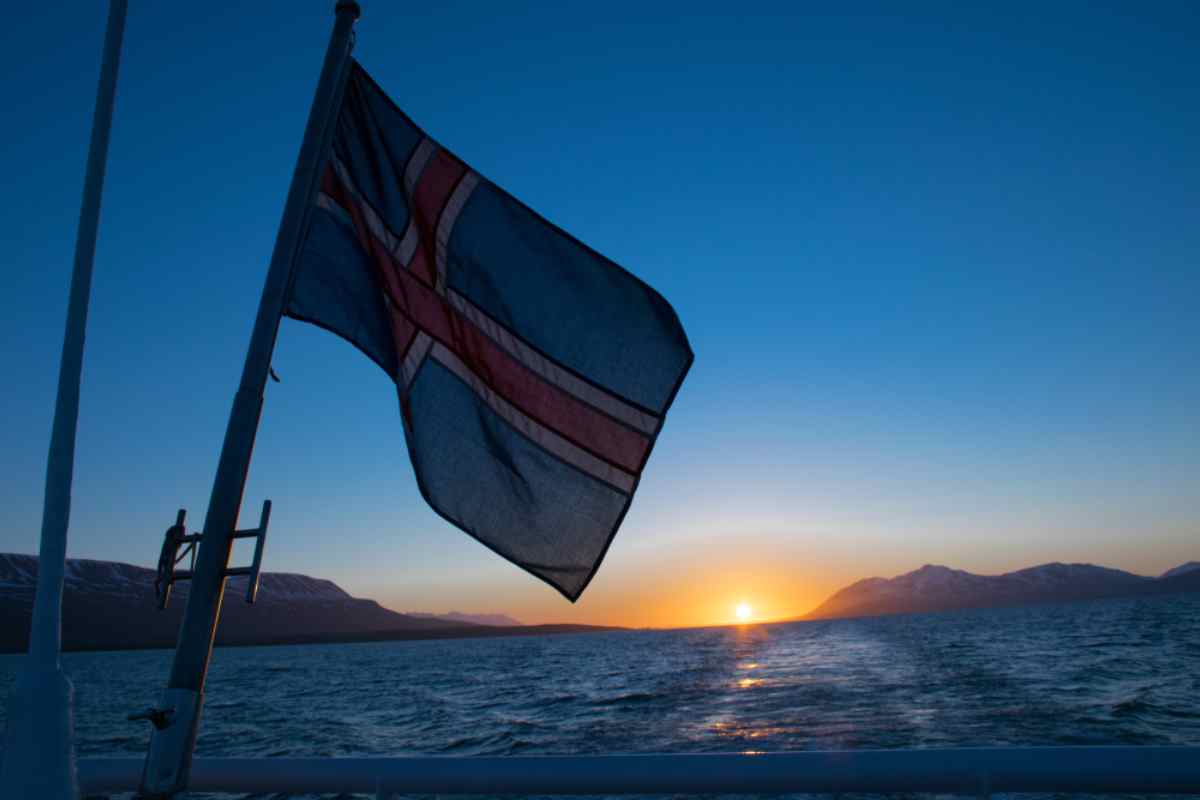
Pick the Right Season
Match the trip to your goals. Summer offers near 24-hour daylight for hiking and long drives. Winter flips to short days, perfect for northern lights and ice caves. Spring and autumn bring fewer tourists and lower costs. Track sunrise and sunset so you know how much sightseeing fits in each day and plan drives to avoid darkness on unfamiliar roads.
Stay Connected
Pick up a prepaid SIM or eSIM on arrival for strong coverage along most of the Ring Road. A pocket Wi-Fi hotspot works if you carry multiple devices. Bring a high-capacity power bank since long hikes and cold weather drain batteries fast. Charge every night, even if you think you have enough.
Plan for Emergencies
Share your route with family or SafeTravel and check in regularly. Note the location of the nearest health centers and keep those contacts saved offline. Carry printed and digital copies of key documents like passports, insurance details, and bookings so you are not stranded if your phone fails.
Drive Smart
Check Umferdin.is for closures and current conditions before starting a drive. Winter tires are mandatory in cold months and help on icy or gravel roads. Slow down on one-lane bridges and plan fuel stops well ahead, especially in the Highlands, where stations can be more than 100 km (62 mi) apart.
Iceland Solo Travel Is Worth Every Krona and Every Mile
Iceland solo travel is more than a checklist of waterfalls and glaciers. It is the steady rhythm of driving into silence and finding new ground every day. The island stays safe, the routes clear, and the payoff huge for anyone traveling alone.
Before you plan the next horizon, check out our campervan fleet built for solo explorers. We have everything from compact rigs to fully equipped vans, each ready to carry you across lava fields and empty roads without compromise. The trip will end, but the freedom and the quiet ride home with you.


 By
By


